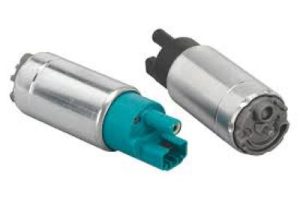Anyone who has experienced a failed Fuel Pump wear indicators can tell you it is no fun, but factors that help save thousands of dollars in repair costs and are Catch2 — on the side under question(Customer). Engine power> Conference instability — Possibly the greatest singn of all is Injury to engine. The fuel pump ensures smooth acceleration as the Fuel Pump behaves to keep consistent fuel pressure within 40 – 60 PSI (approx.) if everything is working well. Otherwise, as the pump dies, it will be increasingly unable to make fuel delivery pressure stay constant and what you get is sputtering or surging under drivetrain load/signal. This inconsistency signifies inner put on and tear meaning the Gas Pump is about to fail, as it desires to be replaced quickly before all of it collapse.
Engine misfires are another common wear indicator. If the Fuel Pump does give out and quit working there will be insufficient supply of gas sent to mix with air coming into the engine causing you to experience, among other things, a rough idling Engine or High speed misfire during acceleration. Such misfires are usually violent and result in greater exhaust emissions, coupled with a lack of fuel economy. The typical fuel efficiency loss due to misfiring engines can be up to 15%, which then translates into higher operating costs. Because misfires lead to unbalanced air-fuel ratio, they must be attended to promptly as continued exposure could potentially damage the engine's internal hardware.
Another sign of it being worn down, is high-pitched noises, protruding from the Fuel Pump region. A Fuel Pump is supposed to run silently while in operation, but as the internal components wear out they create friction and begin generating a whining noise. It is more pronounced when the tank is below a 1/4 full. For example, the addition of fluid or a high pitched whining noise means that your pump is working hard and it could be on its way out for good as mechanics would often use this sound to diagnose problems with the land rover discovery 2 power steering pumps. If you read the auto industry studies regarding this, it means that if your Fuel Pumping is whining while working at full speed then 40% of its efficiency has been lost which simply directs towards replacing.

Trouble beginning the engine may likewise show Fuel Pump wear. When it is finally turned over, a car with an aged pump will also take longer to pressurize the fuel system. That statement is problematic not just because delayed starts are a pain for drivers, but also because it wears the battery of your car as well as its starter. The industry suggests something like, you have a crank timing of more than 5s so your Fuel pump might be failing. It reduces maintenance costs, because the battery and starter wear also reduced.
Abrupt engine temp rises may suggest defective Fuel Pump. This can result in the engine running too hot due to not enough fuel hitting all its intended targets and carry over heat could also damage surrounding components. According to automotive research, extended engine overheating because of gas issues can decrease an engine life by up to 20%. A properly functioning Fuel Pump controls fuel delivery, in turn helping to keep a stable operational temperature.
Reduced MileageAnother indicator of bad Fuel Pump As a result, the engine will try to make up for lack of fuel from lower pressures by burning more gasoline and thus running less efficiently. Consumer reports reveal that a worn pump lowers gas mileage by approximately 10% leading to more operating expenses. By keeping track of fuel efficiency, it is possible to detect pump problems early and reduce the use of consume.
By taking care of these wear indicators promptly, you can protect yourself from having to pay out a significant expense or experience your vehicle being less than reliable. Changing a fuel filter and periodically checking the voltage on your Fuel Pump can also make it last longer. When you do that, be sure to check out Fuel Pump and the best way to prevent wear-related problems while providing advice on how it can improve your vehicle's life.